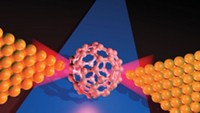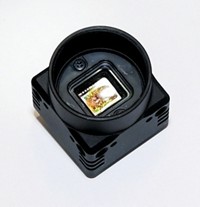Advertisement
Grab your lab coat. Let's get started
Welcome!
Welcome!
Create an account below to get 6 C&EN articles per month, receive newsletters and more - all free.
It seems this is your first time logging in online. Please enter the following information to continue.
As an ACS member you automatically get access to this site. All we need is few more details to create your reading experience.
Not you? Sign in with a different account.
Not you? Sign in with a different account.
ERROR 1
ERROR 1
ERROR 2
ERROR 2
ERROR 2
ERROR 2
ERROR 2
Password and Confirm password must match.
If you have an ACS member number, please enter it here so we can link this account to your membership. (optional)
ERROR 2
ACS values your privacy. By submitting your information, you are gaining access to C&EN and subscribing to our weekly newsletter. We use the information you provide to make your reading experience better, and we will never sell your data to third party members.
Analytical Chemistry
Microscope sees buried objects through superlens
September 18, 2006
| A version of this story appeared in
Volume 84, Issue 38
Scanning near-field optical microscopy (SNOM) can visualize minuscule surface features, such as those on semiconductor chips, that are blurs at best in ordinary optical microscopes. Now, toolmakers at the Max Planck Institute for Biochemistry, in Martinsried, Germany, and at the University of Texas, Austin, have combined a so-called superlens with SNOM's tip to create an instrument they say "allows for subwavelength-scale resolved imaging of buried objects" (Science 2006, 313, 1595). With illumination from an infrared laser set at a wavelength of about 11 µm, the probe scans above a submicrometer-thick silicon carbide superlens placed over a gold layer riddled with a test pattern of different-sized holes. Electromagnetic field signals from the gold layer are focused upward by the superlens and picked up by the rastering probe. The researchers showed they can generate clear images of 1,200- and 860-nm holes and vague outlines of 540-nm holes (shown), which are one-twentieth as large as the illuminating IR wavelength. With other superlens-wavelength combos, the technique should enable "high-resolution optical imaging of various man-made or biological nanostructures," the researchers say.




Join the conversation
Contact the reporter
Submit a Letter to the Editor for publication
Engage with us on Twitter